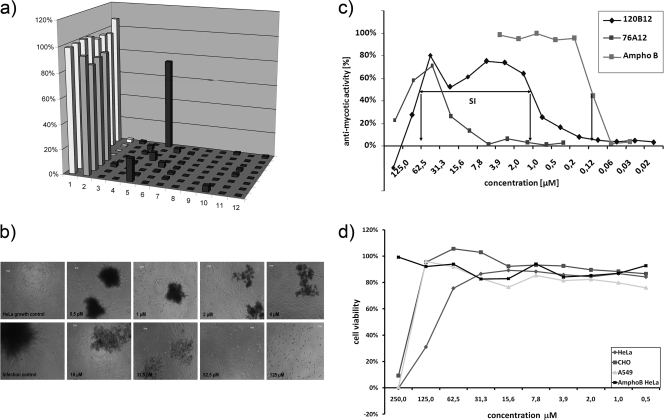Fig. 2.
(a) Screening assay for the identification of antifungals tolerated by human cells. Typical readout of a screening plate containing 80 wells filled with compounds and 16 control wells. HeLa cells only (wells A1 to H1, growth control, light gray), HeLa cells in the presence of C. albicans (wells A2 to D2, infection control, white), HeLa cells in the presence of amphotericin B (wells E2 to H2, antifungal activity control, gray), and C. albicans (remaining wells, columns 3 to 12, dark gray). (b) Microscopic evaluation of a hit in the dose-response assay. The pictures indicate the microscopic evaluation of the growth control and infection control as well as the titration of an arbitrary hit visualizing the screening process. (c) Photometric readout of the dose-response assay. Determination of dose-response curves of two initial hits, EMC120B12 and 76A12. For the initial batch of EMC120B12, an IC50 of 1.1 μM and a CC50 of 62.5 μM could be determined, resulting in an SI of 57. For 76A12, an IC50 of 32 μM and a CC50 of 125 μM could be determined, resulting in an SI of <10. Amphotericin B serves as a control. Each compound was analyzed four times on the same plate. The assay was performed in duplicate. (d) Inhibitory effects of EMC120B12 on three different mammalian cell lines. EMC120B12 was tested against three cell lines for inhibitory effects in the absence of C. albicans. HeLa cells show the highest sensitivity to EMC120B12 (CC50, ∼62.5), whereas A549 and CHO-K1 show higher resistance (CC50, ∼125 μM).

